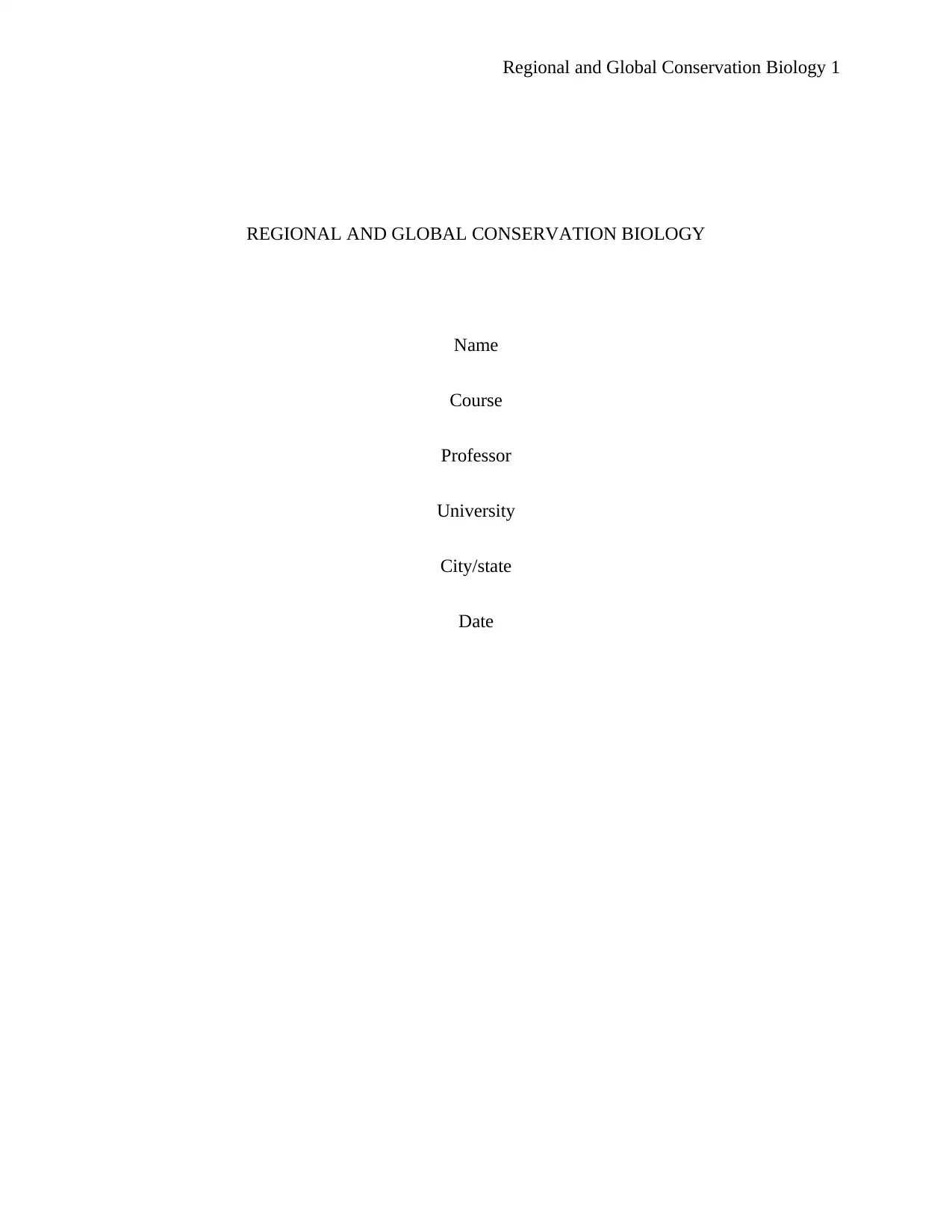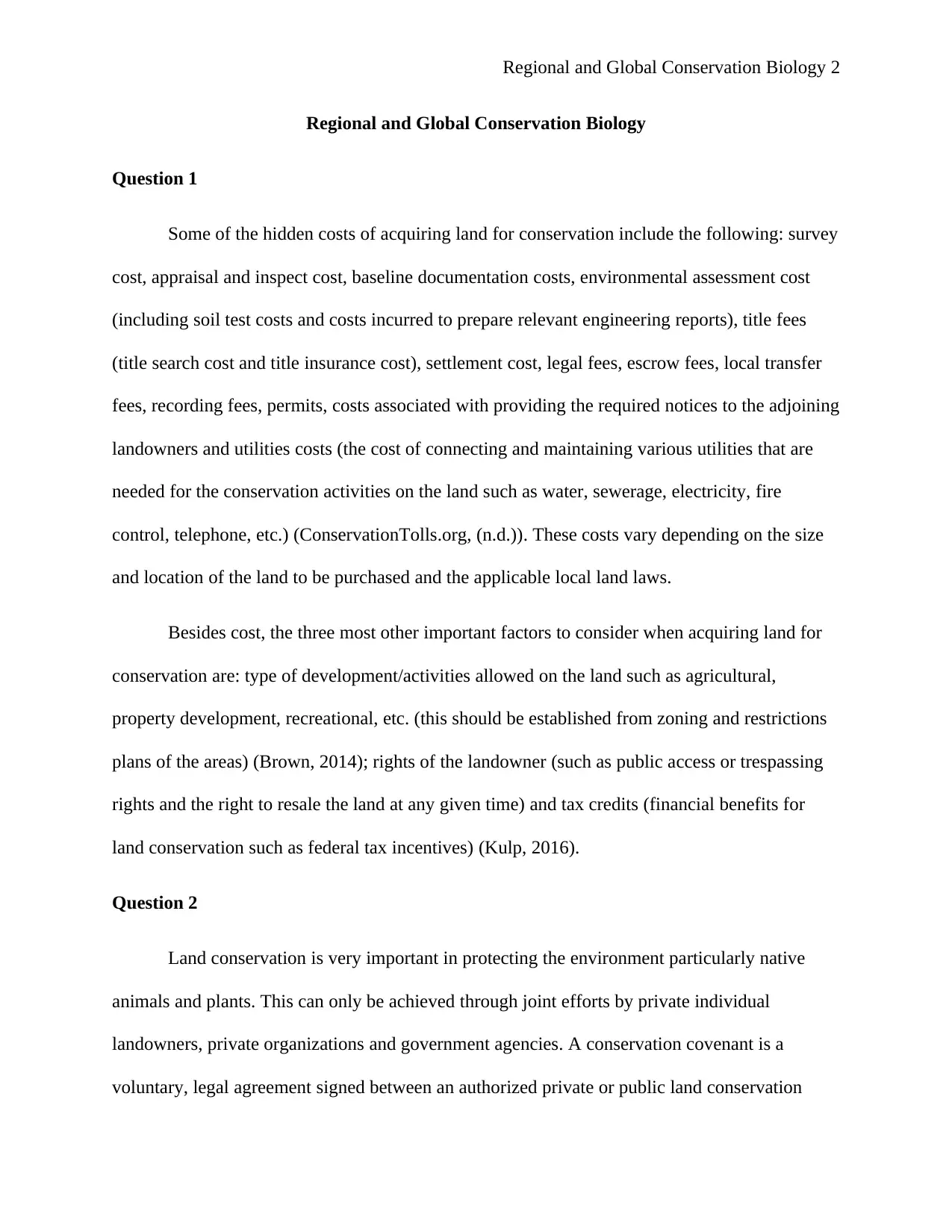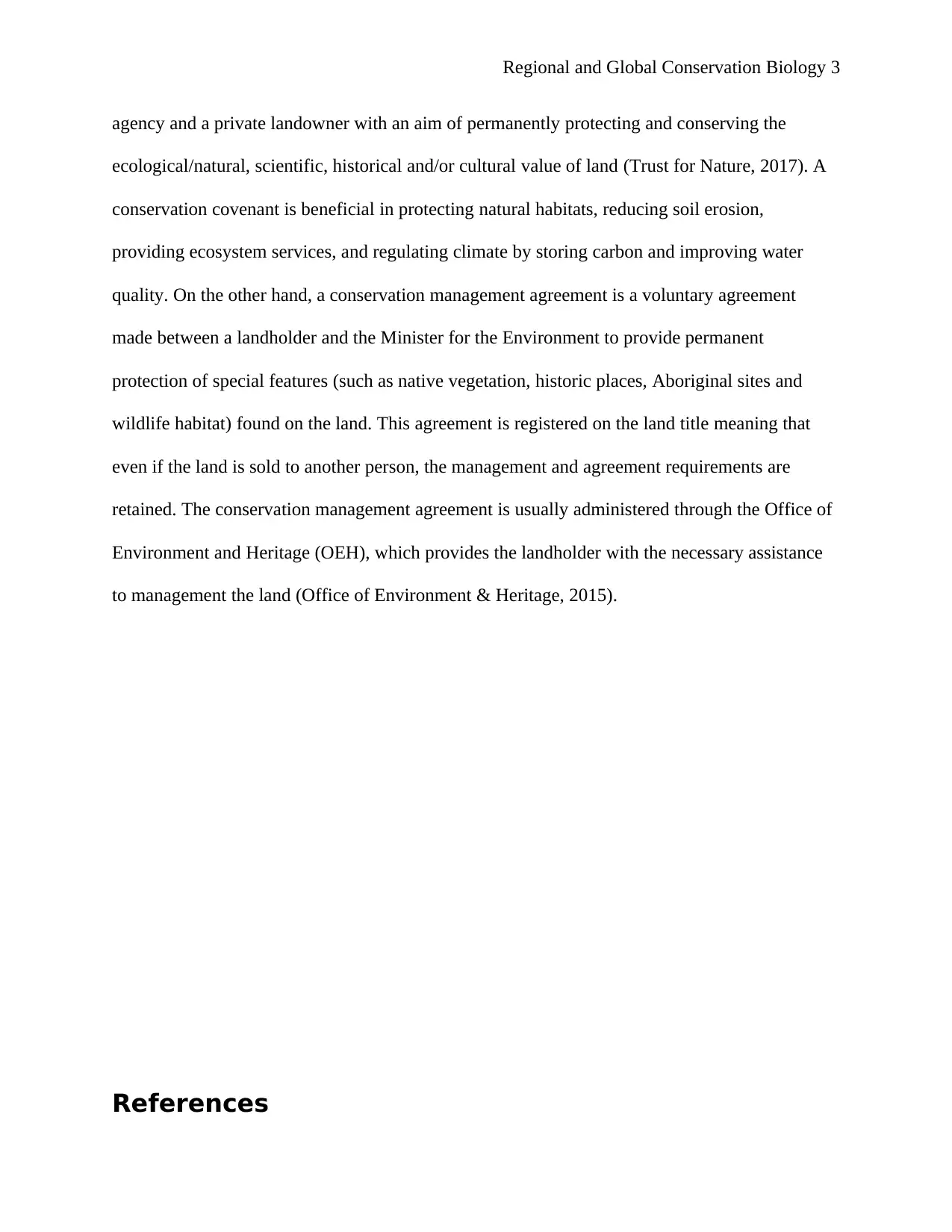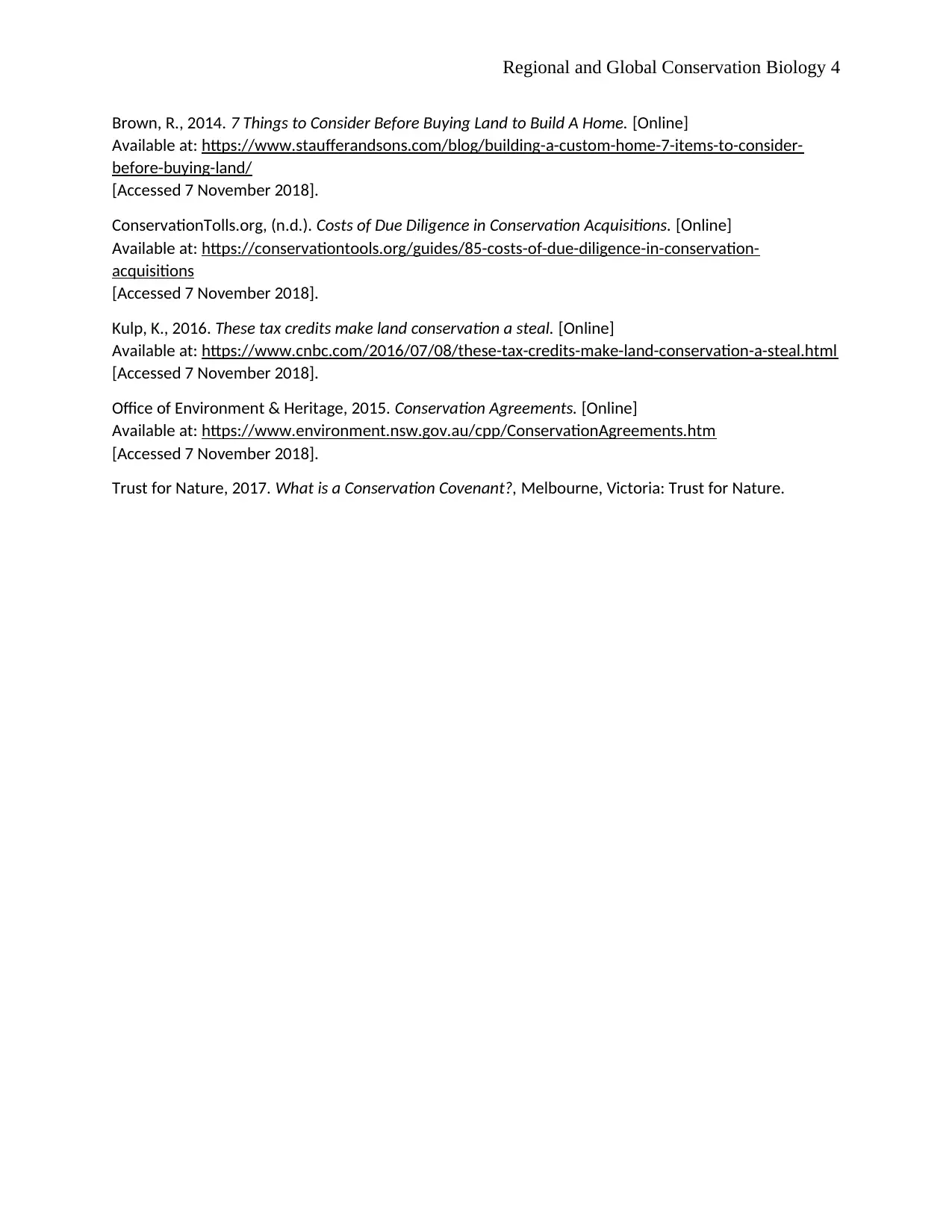University Conservation Biology Assignment: Land and Agreements
VerifiedAdded on 2023/06/01
|4
|673
|328
Homework Assignment
AI Summary
This assignment explores the complexities of land acquisition for conservation efforts, detailing various hidden costs such as survey, appraisal, legal, and utility expenses. It emphasizes the importance of considering factors like permitted land activities, landowner rights, and tax benefits. The assignment then differentiates between conservation covenants, voluntary agreements between conservation agencies and landowners aimed at permanent protection of ecological value, and conservation management agreements, which offer similar protections but are made with the Minister for the Environment and registered on the land title. Both agreements play crucial roles in protecting natural habitats, reducing soil erosion, and regulating climate through carbon storage and improved water quality. The solution references relevant sources to support its arguments.
1 out of 4





![[object Object]](/_next/static/media/star-bottom.7253800d.svg)